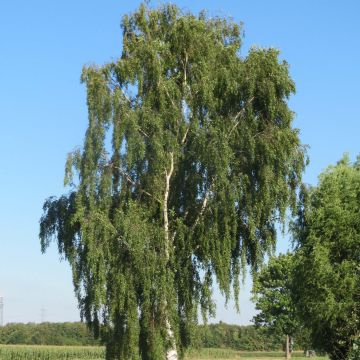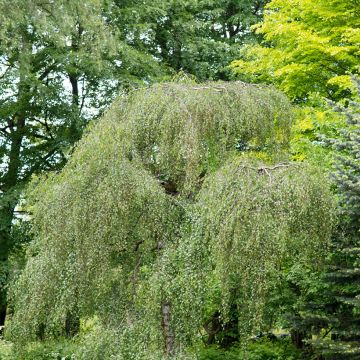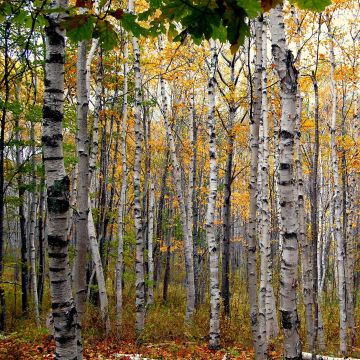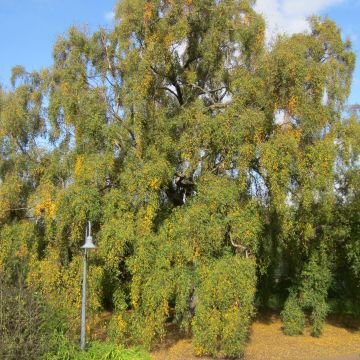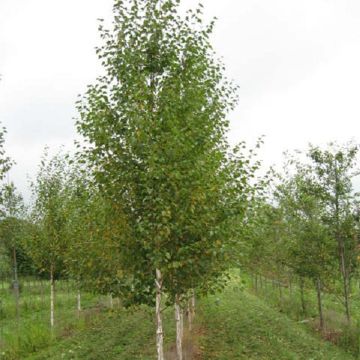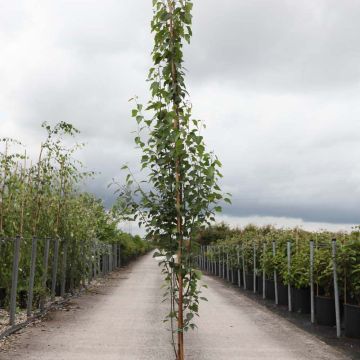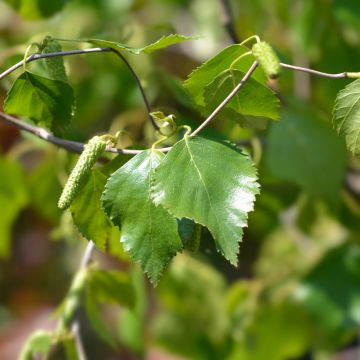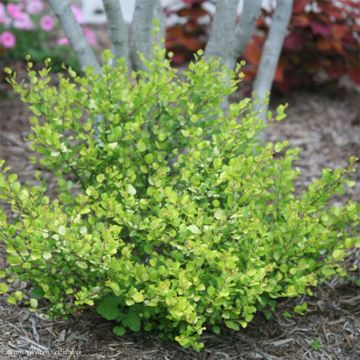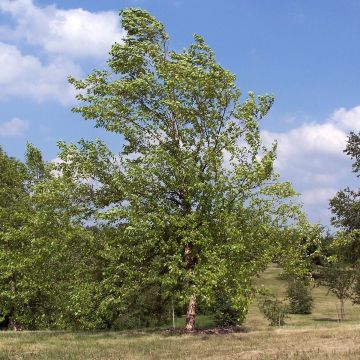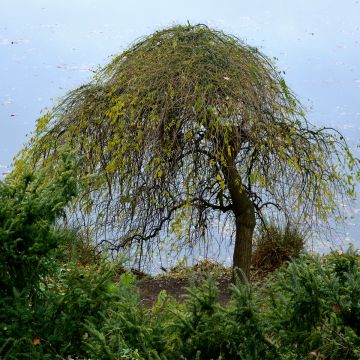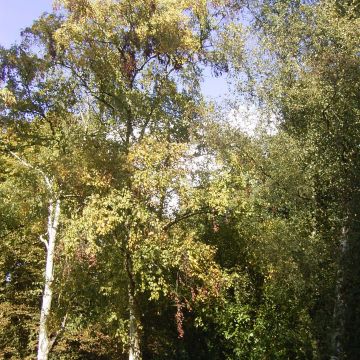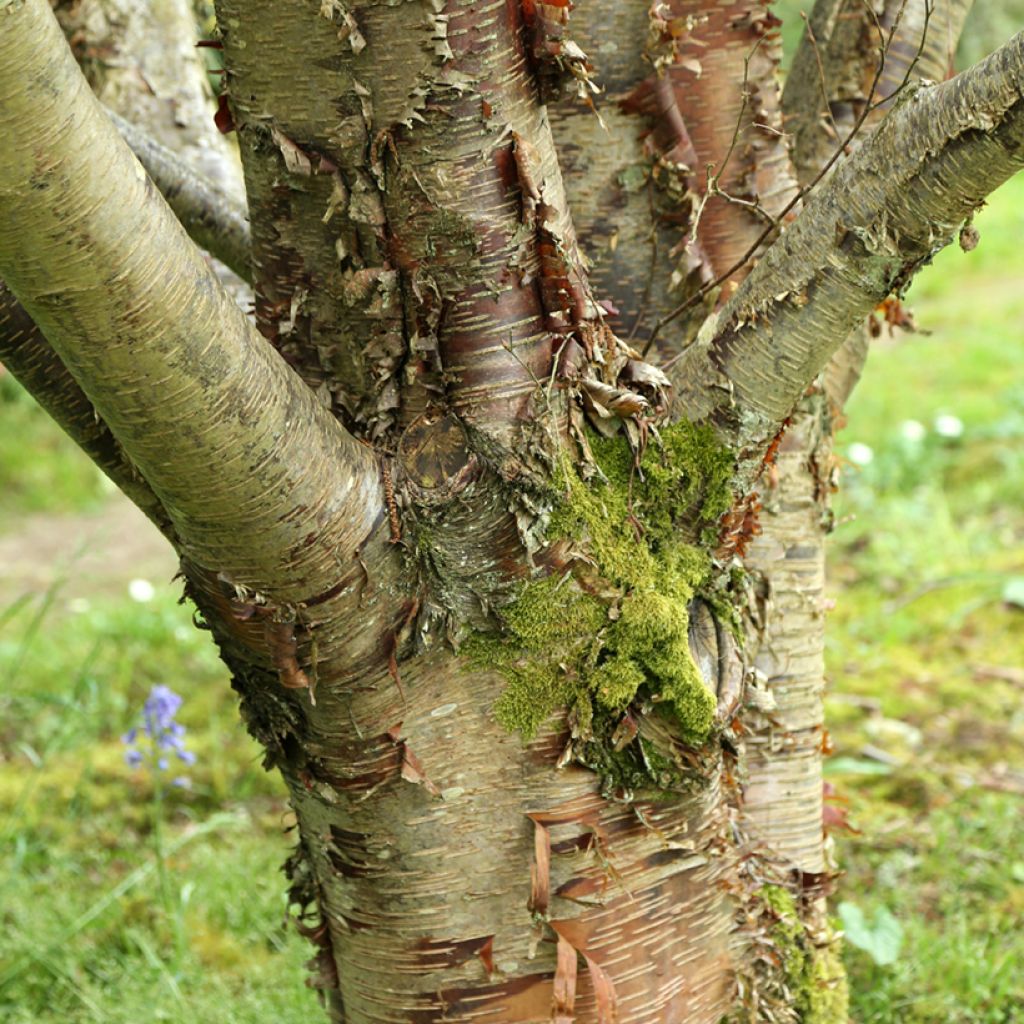

Betula utilis var. prattii - Himalayan Birch
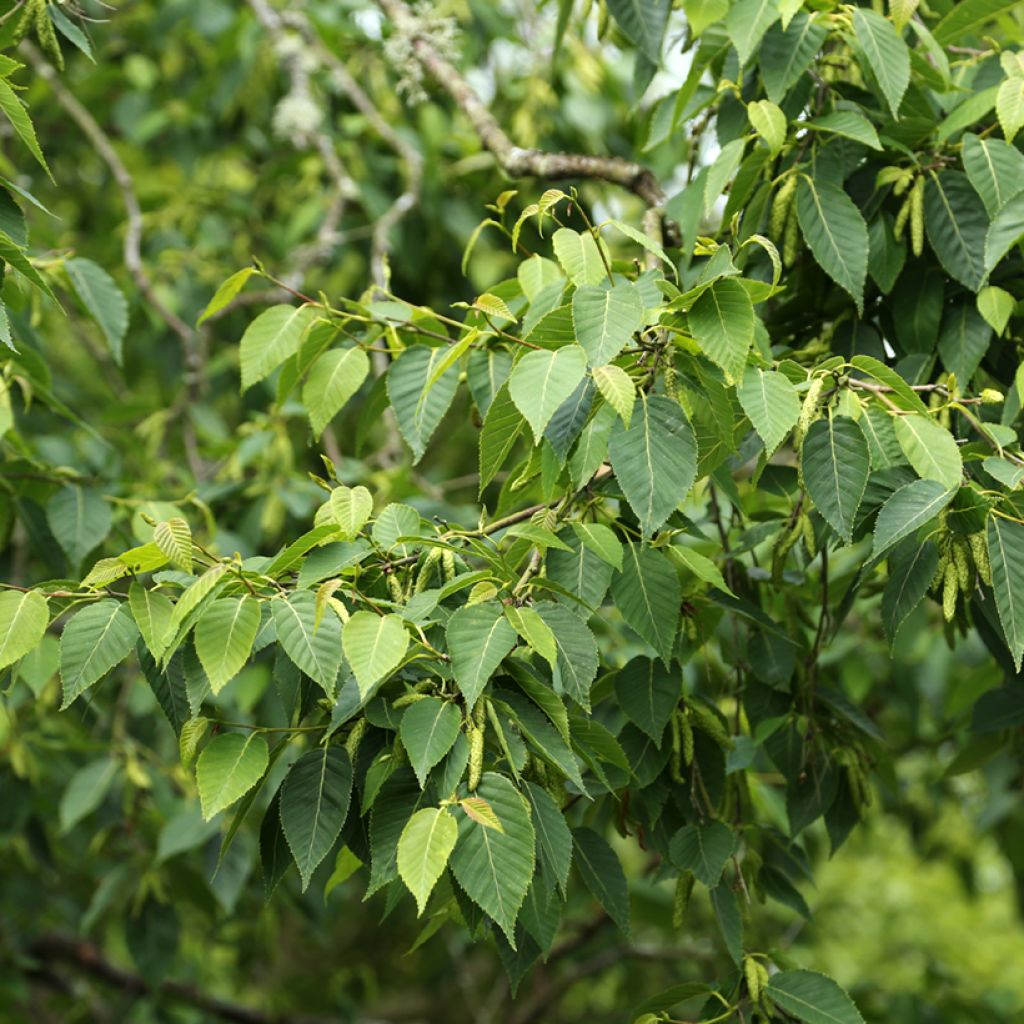

Betula utilis var. prattii - Himalayan Birch
Betula utilis var. prattii - Himalayan Birch
Betula utilis var. prattii
Himalayan Birch
Why not try an alternative variety in stock?
View all →This plant carries a 24 months recovery warranty
More information
We guarantee the quality of our plants for a full growing cycle, and will replace at our expense any plant that fails to recover under normal climatic and planting conditions.
From €5.90 for pickup delivery and €6.90 for home delivery
Express home delivery from €8.90.
Does this plant fit my garden?
Set up your Plantfit profile →
Description
The Betula utilis var. prattii is a beautiful uncommon birch tree, native to the Chinese side of the Himalayas, whose bark turns chestnut red after 2 to 4 years of cultivation. It forms a small to medium-sized tree with an upright habit. Its loose foliage provides light shade in summer, and its leaves turn golden yellow in autumn. Its unusual-coloured bark is very attractive when planted next to a birch tree with white or silver bark.
The Himalayan birch, in Latin Betula utilis, belongs to the Betulaceae family. It is native to Western Asia, from Afghanistan to western China and northwest India. The Betula utilis var. prattii is a subspecies native to the Chinese side of the Himalayas, distinguished by its chestnut red bark that peels off in patches. The trunk shows narrow and horizontal scars, called lenticels, arranged in a regular pattern. Highly cold-resistant, this birch tree exhibits vigorous growth and reaches a height of 10 to 15 meters at maturity, with a width of 6 meters. It has a slightly conical habit with an open, somewhat loose, and slightly spreading crown. It will develop a single trunk that branches out more or less low, sometimes growing into a multi-stemmed tree. Its leaves are deciduous, falling in autumn and reappearing each spring. Its branches bear ovate-shaped leaves, entire and pointed, finely toothed at the edges, measuring 5 to 7 cm long and 4 to 5 cm wide. The lamina is a fairly dark green, shiny on the upper side, paler and duller on the underside. The foliage turns golden yellow in autumn before falling off. The inconspicuous flowering occurs in March-April, with drooping yellow-brown catkins. Its shallow root system makes it sensitive to prolonged drought and strong winds, which can uproot it. This species is well-suited to northern gardens and montane climates. It prefers well-drained, slightly acidic soils, but can tolerate the presence of limestone and moister soils.
The main attraction of Betula utilis var. prattii is its stunning peeling bark in coloured patches throughout the year, particularly spectacular in winter when the tree is leafless. It is mainly planted as a solitary specimen or in small clusters, in a strategic location in the garden that allows the gardener to admire its silhouette from a window. In a contemporary garden, it can be planted alongside Himalayan white birches or Betula pendula 'Royal Frost'. To accompany it, astilbes, hostas, and ferns can be planted nearby if the soil remains consistently moist.
Report an error about the product description
Betula utilis var. prattii - Himalayan Birch in pictures


Plant habit
Flowering
Foliage
Safety measures
Botanical data
Betula
utilis var. prattii
Betulaceae
Himalayan Birch
Himalayas
atteinterespiratoire
Cette plante peut entraîner des symptômes allergiques.
Evitez de la planter si vous ou vos proches souffrez de rhinite saisonnière ("rhume des foins").
Davantage d'informations sur https://plantes-risque.info
Other Betula - Birch tree
Planting and care
Easy to grow, the Betula utilis var. prattii requires little maintenance. It can be planted in a moist, humus-bearing, fertile soil, preferably in an acidic soil to obtain beautiful foliage colouration, but it will also thrive in neutral to slightly alkaline soil, in full sun or partial shade. It can be grown in any well-drained garden soil that retains moisture in summer. To help it establish, water it during the first few years in dry weather. Choose its location carefully, as it does not appreciate being disturbed. It can be left to grow freely, or its trunk can be pruned to the desired height, like with certain willows or mulberries.
Planting period
Intended location
Care
This item has not been reviewed yet - be the first to leave a review about it.
Haven't found what you were looking for?
Hardiness is the lowest winter temperature a plant can endure without suffering serious damage or even dying. However, hardiness is affected by location (a sheltered area, such as a patio), protection (winter cover) and soil type (hardiness is improved by well-drained soil).

Photo Sharing Terms & Conditions
In order to encourage gardeners to interact and share their experiences, Promesse de fleurs offers various media enabling content to be uploaded onto its Site - in particular via the ‘Photo sharing’ module.
The User agrees to refrain from:
- Posting any content that is illegal, prejudicial, insulting, racist, inciteful to hatred, revisionist, contrary to public decency, that infringes on privacy or on the privacy rights of third parties, in particular the publicity rights of persons and goods, intellectual property rights, or the right to privacy.
- Submitting content on behalf of a third party;
- Impersonate the identity of a third party and/or publish any personal information about a third party;
In general, the User undertakes to refrain from any unethical behaviour.
All Content (in particular text, comments, files, images, photos, videos, creative works, etc.), which may be subject to property or intellectual property rights, image or other private rights, shall remain the property of the User, subject to the limited rights granted by the terms of the licence granted by Promesse de fleurs as stated below. Users are at liberty to publish or not to publish such Content on the Site, notably via the ‘Photo Sharing’ facility, and accept that this Content shall be made public and freely accessible, notably on the Internet.
Users further acknowledge, undertake to have ,and guarantee that they hold all necessary rights and permissions to publish such material on the Site, in particular with regard to the legislation in force pertaining to any privacy, property, intellectual property, image, or contractual rights, or rights of any other nature. By publishing such Content on the Site, Users acknowledge accepting full liability as publishers of the Content within the meaning of the law, and grant Promesse de fleurs, free of charge, an inclusive, worldwide licence for the said Content for the entire duration of its publication, including all reproduction, representation, up/downloading, displaying, performing, transmission, and storage rights.
Users also grant permission for their name to be linked to the Content and accept that this link may not always be made available.
By engaging in posting material, Users consent to their Content becoming automatically accessible on the Internet, in particular on other sites and/or blogs and/or web pages of the Promesse de fleurs site, including in particular social pages and the Promesse de fleurs catalogue.
Users may secure the removal of entrusted content free of charge by issuing a simple request via our contact form.
The flowering period indicated on our website applies to countries and regions located in USDA zone 8 (France, the United Kingdom, Ireland, the Netherlands, etc.)
It will vary according to where you live:
- In zones 9 to 10 (Italy, Spain, Greece, etc.), flowering will occur about 2 to 4 weeks earlier.
- In zones 6 to 7 (Germany, Poland, Slovenia, and lower mountainous regions), flowering will be delayed by 2 to 3 weeks.
- In zone 5 (Central Europe, Scandinavia), blooming will be delayed by 3 to 5 weeks.
In temperate climates, pruning of spring-flowering shrubs (forsythia, spireas, etc.) should be done just after flowering.
Pruning of summer-flowering shrubs (Indian Lilac, Perovskia, etc.) can be done in winter or spring.
In cold regions as well as with frost-sensitive plants, avoid pruning too early when severe frosts may still occur.
The planting period indicated on our website applies to countries and regions located in USDA zone 8 (France, United Kingdom, Ireland, Netherlands).
It will vary according to where you live:
- In Mediterranean zones (Marseille, Madrid, Milan, etc.), autumn and winter are the best planting periods.
- In continental zones (Strasbourg, Munich, Vienna, etc.), delay planting by 2 to 3 weeks in spring and bring it forward by 2 to 4 weeks in autumn.
- In mountainous regions (the Alps, Pyrenees, Carpathians, etc.), it is best to plant in late spring (May-June) or late summer (August-September).
The harvesting period indicated on our website applies to countries and regions in USDA zone 8 (France, England, Ireland, the Netherlands).
In colder areas (Scandinavia, Poland, Austria...) fruit and vegetable harvests are likely to be delayed by 3-4 weeks.
In warmer areas (Italy, Spain, Greece, etc.), harvesting will probably take place earlier, depending on weather conditions.
The sowing periods indicated on our website apply to countries and regions within USDA Zone 8 (France, UK, Ireland, Netherlands).
In colder areas (Scandinavia, Poland, Austria...), delay any outdoor sowing by 3-4 weeks, or sow under glass.
In warmer climes (Italy, Spain, Greece, etc.), bring outdoor sowing forward by a few weeks.

































